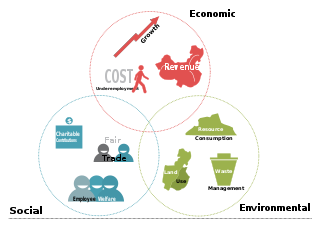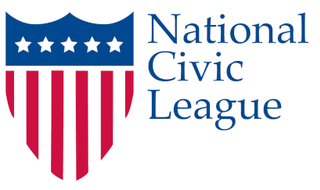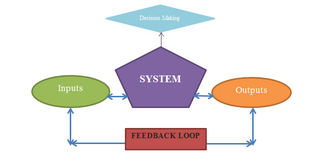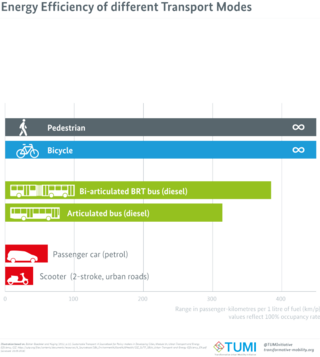Related Research Articles

Smart growth is an urban planning and transportation theory that concentrates growth in compact walkable urban centers to avoid sprawl. It also advocates compact, transit-oriented, walkable, bicycle-friendly land use, including neighborhood schools, complete streets, and mixed-use development with a range of housing choices. The term "smart growth" is particularly used in North America. In Europe and particularly the UK, the terms "compact city", "urban densification" or "urban intensification" have often been used to describe similar concepts, which have influenced government planning policies in the UK, the Netherlands and several other European countries.

An ecovillage is a traditional or intentional community with the goal of becoming more socially, culturally, economically, and/or ecologically sustainable. An ecovillage strives to produce the least possible negative impact on the natural environment through intentional physical design and resident behavior choices. It is consciously designed through locally owned, participatory processes to regenerate and restore its social and natural environments. Most range from a population of 50 to 250 individuals, although some are smaller, and traditional ecovillages are often much larger. Larger ecovillages often exist as networks of smaller sub-communities. Some ecovillages have grown through like-minded individuals, families, or other small groups—who are not members, at least at the outset—settling on the ecovillage's periphery and participating de facto in the community.

The triple bottom line is an accounting framework with three parts: social, environmental and economic. Some organizations have adopted the TBL framework to evaluate their performance in a broader perspective to create greater business value. Business writer John Elkington claims to have coined the phrase in 1994.

The National Civic League is an American nonpartisan, non-profit organization founded in 1894 with a mission to advance civic engagement to create equitable, thriving communities. The League envisions a country where the full diversity of community members are actively and meaningfully engaged in local governance, including both decision making and implementation of activities to advance the common good. It also promotes professional management of local government through publication of "model charters" for both city and county governments.
The Earth Charter is an international declaration of fundamental values and principles considered useful by its supporters for building a just, sustainable, and peaceful global society in the 21st century. Created by a global consultation process, and endorsed by organizations representing millions of people, the Charter "seeks to inspire in all peoples a sense of global interdependence and shared responsibility for the well-being of the human family, the greater community of life, and future generations." It calls upon humanity to help create a global partnership at a critical juncture in history. The Earth Charter's ethical vision proposes that environmental protection, human rights, equitable human development, and peace are interdependent and indivisible. The Charter attempts to provide a new framework for thinking about and addressing these issues. The Earth Charter Initiative organization exists to promote the Charter.
The Natural Step is a non-profit, non-governmental organisation founded in Sweden in 1989 by scientist Karl-Henrik Robèrt. The Natural Step is also used when referring to the partially open source framework it developed. Following publication of the Brundtland Report in 1987, Robèrt developed The Natural Step framework, setting out the system conditions for the sustainability of human activities on Earth; Robèrt's four system conditions are derived from a scientific understanding of universal laws and the aspects of our socio-ecological system, including the laws of gravity, the laws of thermodynamics and a multitude of social studies.
The World Conference on Disaster Risk Reduction is a series of United Nations conferences focusing on disaster and climate risk management in the context of sustainable development. The World Conference has been convened three times, with each edition to date having been hosted by Japan: in Yokohama in 1994, in Hyogo in 2005 and in Sendai in 2015. As requested by the UN General Assembly, the United Nations Office for Disaster Risk Reduction (UNISDR) served as the coordinating body for the Second and Third UN World Conference on Disaster Reduction in 2005 and 2015.

Ecological sanitation, commonly abbreviated as ecosan, is an approach to sanitation provision which aims to safely reuse excreta in agriculture. It is an approach, rather than a technology or a device which is characterized by a desire to "close the loop", mainly for the nutrients and organic matter between sanitation and agriculture in a safe manner. One of the aims is to minimise the use of non-renewable resources. When properly designed and operated, ecosan systems provide a hygienically safe system to convert human excreta into nutrients to be returned to the soil, and water to be returned to the land. Ecosan is also called resource-oriented sanitation.

Environmental planning is the process of facilitating decision making to carry out land development with the consideration given to the natural environment, social, political, economic and governance factors and provides a holistic framework to achieve sustainable outcomes. A major goal of environmental planning is to create sustainable communities, which aim to conserve and protect undeveloped land.

Health ecology is an emerging field that studies the impact of ecosystems on human health. It examines alterations in the biological, physical, social, and economic environment to understand how these changes impact human mental and physical health.

ICLEI – Local Governments for Sustainability is an international non-governmental organization that promotes sustainable development. ICLEI provides technical consulting to local governments to meet sustainability objectives.
Drinking water supply and sanitation coverage in Honduras has increased significantly in the last decades. However, the sector is still characterized by poor service quality and poor efficiency in many places. Coverage gaps still remain, particularly in rural areas.
Karl-Henrik Robèrt, M.D., Ph.D., is a Swedish cancer scientist and an important figure in the worldwide sustainability movement. He is known for the Framework for Strategic Sustainable Development - also known as The Natural Step Framework, after the not for profit promoting and applying it - a framework that lays out the system conditions for sustainability, that arose from his consultations with municipalities, businesses, government departments, environmental organizations, and the arts community. Having secured the imprimatur of the King of Sweden, The Natural Step was launched with attendant television coverage and distribution of educational material to every school and household in Sweden.
The water and sanitation sector in Peru has made important advances in the last two decades, including the increase of water coverage from 30% to 85% between 1980 and 2010. Sanitation coverage has also increased from 9% to 37% from 1985 to 2010 in rural areas. Advances have also been achieved concerning the disinfection of drinking water and in sewage treatment. Nevertheless, many challenges remain, such as:

Regenerative design is a process-oriented whole systems approach to design. The term "regenerative" describes processes that restore, renew or revitalize their own sources of energy and materials. Regenerative design uses whole systems thinking to create resilient and equitable systems that integrate the needs of society with the integrity of nature.
Ecological design or ecodesign is an approach to designing products and services that gives special consideration to the environmental impacts of a product over its entire lifecycle. Sim Van der Ryn and Stuart Cowan define it as "any form of design that minimizes environmentally destructive impacts by integrating itself with living processes." Ecological design can also be defined as the process of integrating environmental considerations into design and development with the aim of reducing environmental impacts of products through their life cycle.
Sustainability metrics and indices are measures of sustainability, and attempt to quantify beyond the generic concept. Though there are disagreements among those from different disciplines, these disciplines and international organizations have each offered measures or indicators of how to measure the concept.

Sustainable urbanism is both the study of cities and the practices to build them (urbanism), that focuses on promoting their long term viability by reducing consumption, waste and harmful impacts on people and place while enhancing the overall well-being of both people and place. Well-being includes the physical, ecological, economic, social, health and equity factors, among others, that comprise cities and their populations. In the context of contemporary urbanism, the term cities refers to several scales of human settlements from towns to cities, metropolises and mega-city regions that includes their peripheries / suburbs / exurbs. Sustainability is a key component to professional practice in urban planning and urban design along with its related disciplines landscape architecture, architecture, and civil and environmental engineering. Green urbanism and ecological urbanism are other common terms that are similar to sustainable urbanism, however they can be construed as focusing more on the natural environment and ecosystems and less on economic and social aspects. Also related to sustainable urbanism are the practices of land development called Sustainable development, which is the process of physically constructing sustainable buildings, as well as the practices of urban planning called smart growth or growth management, which denote the processes of planning, designing, and building urban settlements that are more sustainable than if they were not planned according to sustainability criteria and principles.

The United Nations Office for Disaster Risk Reduction (UNDRR) was created in December 1999 to ensure the implementation of the International Strategy for Disaster Reduction.
Eco-industrial development (EID) is a framework for industry to develop while reducing its impact on the environment. It uses a closed loop production cycle to tackle a broad set of environmental challenges such as soil and water pollution, desertification, species preservation, energy management, by-product synergy, resource efficiency, air quality, etc.
References
- James, S. and T. Lahti (2004). The Natural Step for Communities: How Cities and Towns can Change to Sustainable Practices. Gabriola Island, British Columbia: New Society Publishers. ISBN 0-86571-491-6